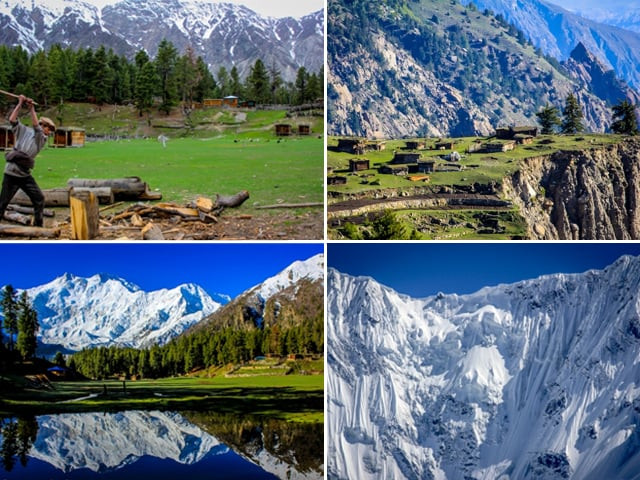

Towards the northern side, it welcomes us with the Raikot glacier, strewn with dark echoing crevasses, plagued by constant avalanches, and guarded by 15 meters of ice spears. One in five people who attempted to climb the Nanga Parbat never descend. Even the famous Reinhold Messner, the first mountaineer to climb the entire world’s 14 peaks had to be nursed back to life after losing his brother as well as seven of his toes on the mountain.

Nanga Parbat is the ninth tallest mountain in the world, standing at 8,125 meters (26,657 feet), and is the second tallest mountain in Pakistan, after K2. It is also the first mountain in the great Himalaya range, which stretches up to 2,400 kilometres to the east, running through six nations and ending in Tibet.



The male mountain dwellers have long black beards, wear topis (hats), long kurtas (shirts) and a strong smell of tobacco surrounds them. Their eyes seem intent, maybe because they are so used to tracking storms on the mountain. Women are seldom seen, mostly on a distant ridge in their bright flowing sashes, tending to a field or herding goats with long shaggy hair, twisted horns and enchanting golden eyes, resembling those of the Greek God, Pan.

The meadows change with the seasons. The birch trees streak the mountains with a bright yellow in autumn, while winter is bare, bone white and still. Spring brings forth the river’s roar, the crisp cracks of avalanches and the bloom of purple, yellow and white wildflowers. Babbling brooks flow through the meadows, sparkling with stones such as pyrite and quartz, but the snow remains glued to the mountain tops. Winter winds seldom visit in spring, howling through the log cabins at night.

The stark beauty of spring is said to be the highlight of the meadows and the best time to visit is from mid-July till end August. During the summer, the heat of the valley becomes unbearable and landslides are all too common, therefore, the village dwellers of Tato load their important possessions on donkeys and trek up to the Fairy Meadows for all of summer.

Houses are nestled amongst the mountains like hobbit holes, built out of pine logs with flattened birch barks used for the roof. The men play polo, sip tea and cut firewood with the echoing thuds of their axes. The women pick wild mulberries, raspberries, and strawberries in the meadows as well as tend to their vegetable gardens.


At night, Nanga Parbat glows white in the still darkness, and men lounge on Pakistani rugs around small wood-fired iron stoves relaying tales of the killer mountain.
Since the devastating Taliban attack on climbers in 2013 was erroneously reported to have occurred in Fairy Meadows (it actually occurred quite far away) and has scared most visitors away from the region, the mountain trails and creaky little log bridges across the rivers are now mostly just used by villagers.

However, the government has taken this incident quite seriously and now armed guards accompany hikers on their trekking expeditions, including to the Nanga Parbat base camp in the summer. The experience feels very safe, and travellers should worry more about the steep cliffs and the biting cold at night rather than the possibility of terrorist attacks.

Hikers should take advantage of the pristine experience they can have while visiting this gem of a place. Those interested in the trip should contact Ghulam Nabi, who runs Raikot Serai Lodge.
All Photos: Mike McCaffrey
This post originally appeared here.



COMMENTS
Comments are moderated and generally will be posted if they are on-topic and not abusive.
For more information, please see our Comments FAQ